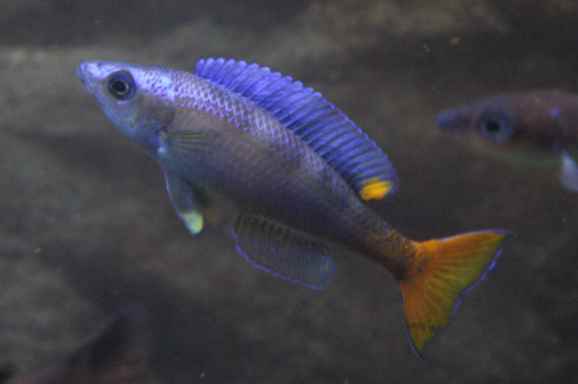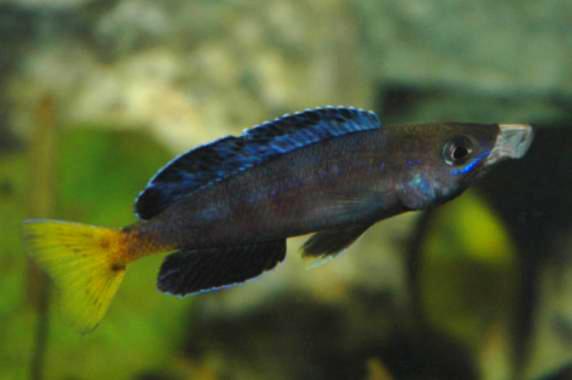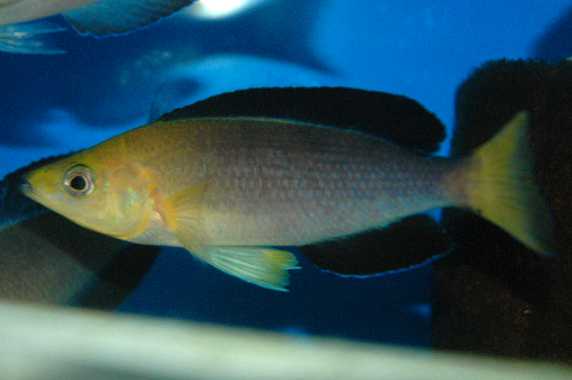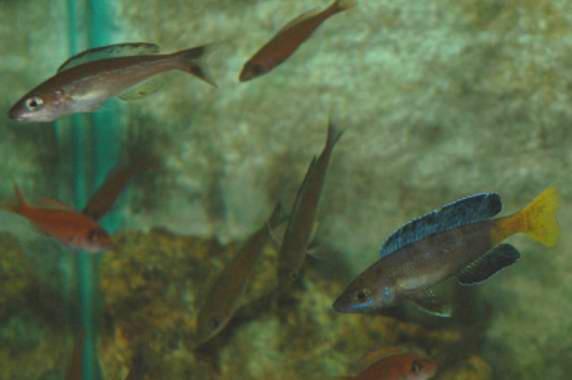
An active and attractive schooling dither fish, Cyprichromis make wonderful additions to any aquarium provided there is enough open water and a tight fitting lid. These fish are found off the coast in the open waters feeding on zooplankton, thus they are not restricted by physical territorial markers such as rocks or caves. In addition, they have evolved special mouths that extend forward, shooting ahead to capture zooplankton and other small prey (Shown middle).
When keeping these fish, it is important to remember that they are only comfortable within a school. Not keeping enough individuals will severely hinder their natural schooling instinct and limit the amount of behavior they display. Because of the multiple male color morphs found within each species, keeping more than one male gives a greater illusion of diversity. In the natural environment, mixed schools of three or more species can be found numbering in the thousands.
A colony of 8 colorless C. leptosoma "Utinta" fry were placed into a 20 gallon sump, where they doubled in size to 1.25" at which point they were transferred to a 30 gallon long tank. Here these nondescript juveniles developed into sexually dimorphic individuals within six months. There were two males with orange tails and two with blue-black tails, and the remaining four fish were females.
The two most dominate males immediately divided the tank in half, forming three-dimensional territories within the middle to upper water column, one to the left and the other to the right. The females and less developed males continued schooling into and out of these territories, however as the dominate males became more aggressive, the open schooling area dwindled in size until the school was locked into a tiny space in between the displaying males' territories. At this point the entire school was moved into a 75-gallon tank.
Almost immediately, the mouth brooding females spawned within the spacious area and were carrying six to nine large white eggs, which slowly developed into dark gray 3/8" fry, large by any standard. After three weeks, the fry were released one by one into the upper water column. The vulnerable and clumsy fry would then try to find cover, where they can develop motor coordination and competent swimming skills. Once released, the mother was not able to recapture the fry, nor did the fry make any attempt to reenter her mouth for shelter.


